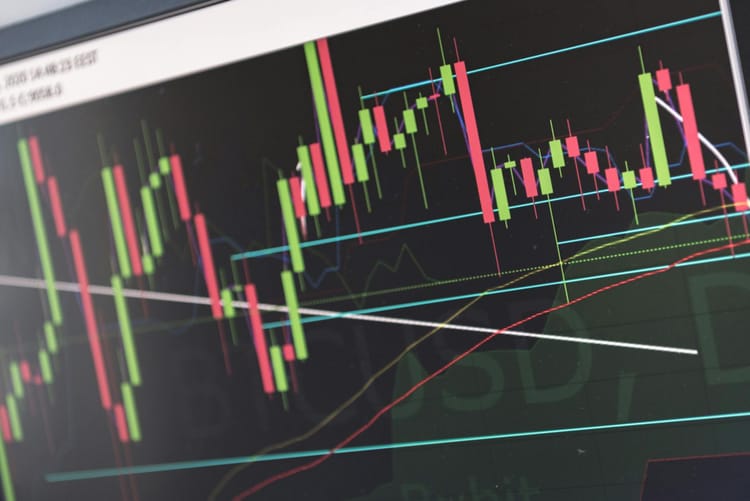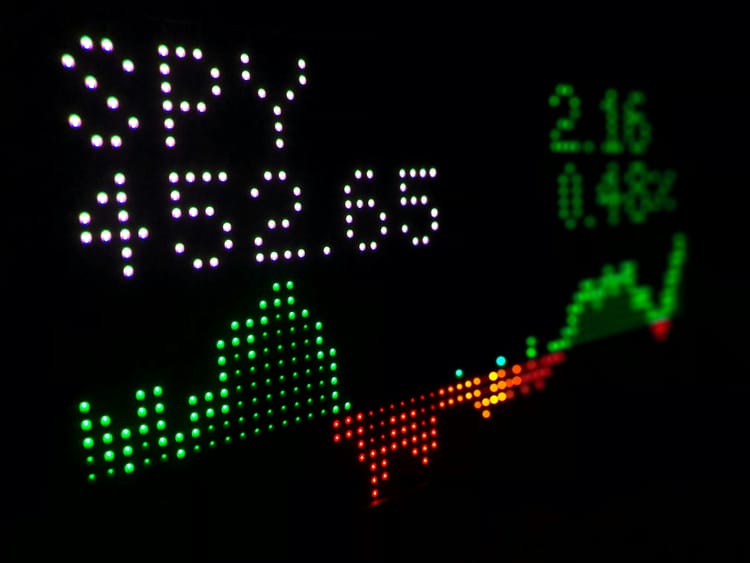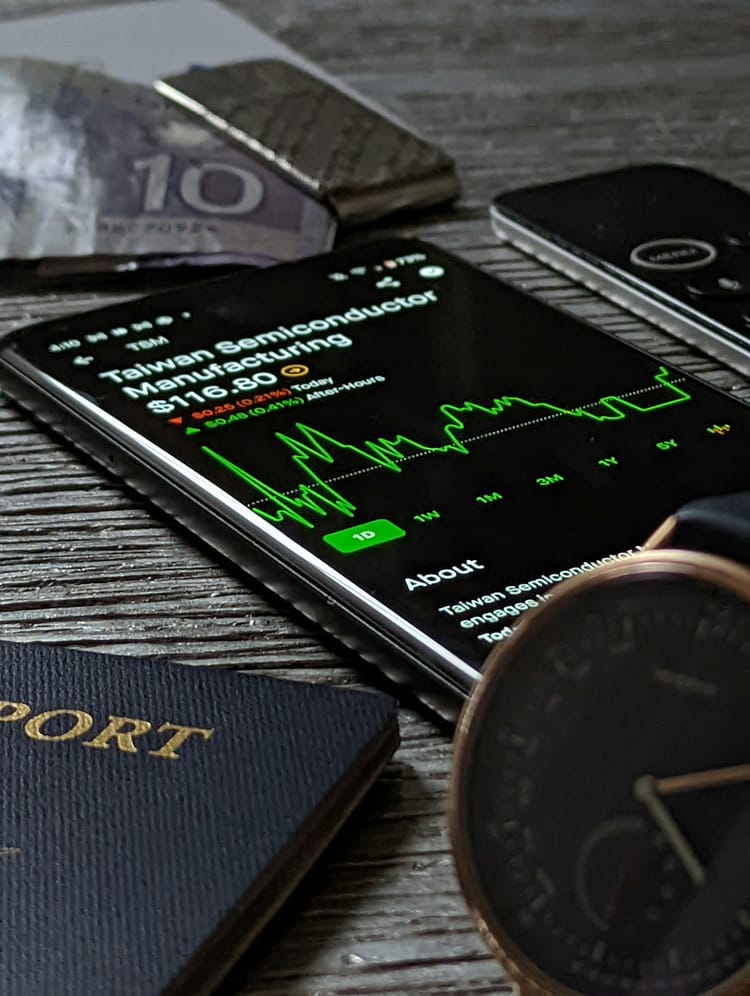A Comprehensive Guide on Trading Psychology to Control Emotional Challenges

“Ugh, the market's been choppy all day. Every time I think about placing a trade, my stomach clenches. What if I lose it all?"
"Everyone's saying this new tech stock is going to the moon! Should I get in now before it's too late!"
"Damn it, another loss! I swear, I'll make that market pay. I will keep trading until I recoup everything, even if it takes all night!"
"This is unbelievable! My trades are hitting like clockwork! I must be a trading genius!"
"I can't do this anymore. Every trade I make goes wrong. The market hates me. Maybe I should just quit."
All of these are the dialogues that you may have also heard in your trading circles.
Or,
You may have experienced these emotions yourself as well.
These are the feelings of traders battling with their internal demons, their emotions!
See,
Successful trading requires a balanced approach that combines strong technical and fundamental analysis with robust emotional control while executing trading strategies. A Skill common to most of the successful traders!
In the guide below, we will discuss these psychological aspects and will try to find some ways to incorporate this emotional control in trading.
What is Trading Psychology?
It studies how emotions and mental states influence your trading decisions and trading performance.
This study recognizes that the market, despite its technical complexities, is ultimately driven by human behavior, including your own.
And therefore,
Mastering your emotions and mental approach becomes crucial for consistent success.
How do you overcome the Psychological Challenges in trading?
Overcoming Psychological challenges in trading is a three-step approach
- Know the emotions and their triggers behind your trading decisions;
- Develop an understanding of the cognitive biases in your trading decisions.
- Develop and Implement strategies to control these emotions
So let's unwind the human mind and see what makes the traders do the things that they shouldn’t be doing while trading;
Know the feelings behind your trading decisions;
"Have you ever stared at a dropping stock chart and realized that your trading journey is mainly driven by your decisions while flowing in emotions?
If your answer is even a hesitant "maybe," you're not alone.
The market discussion of emotion and profit is ancient, predating ticker tapes and internet forums.
But let's be honest: We have all fallen into the emotional pitfalls in our respective trading journeys.
Take the CNN Fear & Greed Index, for example; one day, it shows "extreme greed," promising instant riches, and the next, it says "Extreme Fear. " But amidst all this, one truth remains constant:
your most valuable asset in the market isn't your capital,
it's your emotional awareness.
Fear, greed, hope, excitement, frustration – these are the invisible feelings pulling the strings of our trades.
The good news is, just like any skill, mastering our emotions in the market is possible, but it's a big thing; it takes practice and awareness. We can learn to identify our emotional triggers and develop coping mechanisms that keep us grounded in trading. It's like becoming the mechanic of your dynamic system. Actively understanding what triggers each emotion and what situations activate or deactivate them.
Common Emotions in Trading:
We can broadly categorize emotions into the following.
1. Fear
Fear is Probably one of the most common emotions that grips the market time and again,
Have you ever felt anxiety, nervousness, or panic when markets decline?
This anxiety or nervousness may give rise to a strong urge to sell out of positions to avoid further losses.
Or,
If not the anxiety,
You must have experienced,
Hesitation to enter new trades for Fear of making the wrong choice.
That feeling of
“What if things don’t work out as planned?”
These inner fears create so much emotional pressure that sticking to your trading plan becomes difficult.
But you must understand that,
Fear in trading is a natural emotional response to uncertainty and potential loss.
It manifests in various ways, impacting your decision-making and potentially hindering your trading success. Here's a closer look:
How Fear Affects Trading:
- Panic selling: Fear can lead to hasty decisions, like selling profitable positions prematurely due to anxiety about potential losses. This can harm your long-term returns.
- Missed opportunities: Fear can also cause you to miss out on profitable trades by hesitating to enter the market during downturns.
- Overtrading: Some traders, driven by a fear of missing out, may overtrade to compensate for previous losses. This can increase transaction costs and exacerbate potential losses.
- Ignoring rationale: Fear can cloud your judgment and make it challenging to stick to your well-defined trading plan, which leads to impulsive and irrational decisions.
2. Greed:
Greed, like its counterpart fear, is also a powerful emotion.
While Fear may tell you that you may incur a loss,
Greed, On the other hand, promises of endless riches.
How?
Let's say you've nailed five trades in a row, and now, your inner self is telling you that you can even hit greater profits if you take the 6th trade and beyond.
So, ignoring your exit plan, you chase ever-higher profits, risking a reversal.
Or,
Witnessing another trader's windfall ignites your desire to replicate their success. You jump into a volatile trend without proper analysis or trend identification, hoping for a quick copycat win.
This is Greed.
An insatiable desire for maximum profits, regardless of risk, a constant sense of wanting more, even after profitable trades.
Greed is problematic because it builds,
Overconfidence in your abilities, a dangerous emotion, chasing after quick gains leading to riskier bets.
But sometimes,
It is not only about achieving more significant profits,
Greed may also make you hold onto losing positions, hoping to turn them around.
“I do not sell in loss” or
"This stock has touched X Price before; It will go to this X price again; I should wait for it to go to that price."
This is how a greedy trader has difficulty accepting losses and keeps holding the losing positions.
Greed can affect trading in multiple ways:
- Overtrading: Greed can fuel excessive trading, pushing you to take unnecessary positions in pursuit of more significant profits. This can increase transaction costs and expose you to greater risk.
- Chasing momentum: A pull in “hot trends" can lead you to pursue momentum mindlessly, investing in assets based on hype rather than sound analysis. This can result in significant losses when the trend reverses.
- Ignoring risk management: Driven by the thirst for quick gains, you may need to pay attention to stop-loss orders and risk management principles, potentially suffering substantial losses if the market turns against you.
- Delusion and denial: Greed can distort your perception of reality, making you hold onto losing positions, hoping they will eventually recover, leading to more profound losses.
3. Anger or Revenge Trading
Anger is another impactful emotion that takes a particularly destructive form in trading.
Fueled by recent losses, traders enter the market with a singular focus.
Payback.
To Take back whatever has been lost.
Let's See a couple of situations to understand ;
Let's Say you bought a stock after a thorough analysis. But the market tanks unexpectedly, swallowing your investment.
As a natural response to this situation, anger will flare up. You will start asking yourself,
"How could I be so wrong? I'll show this market who the boss is here!"
And what do you do?
Fueled by a desire to prove your analysis right, you impulsively double down on the losing position.
The result?
More Losses incurred.
Here is another interesting situation,
Let's Say, In one of your trades, your stop-loss order gets triggered, saving you from further losses,
but then,
the stock picks up again after the dip,
Deep down inside,
A Missed profit opportunity stings you!
"That stupid stop-loss cut me off! I deserved that win!"
And to recover this missed profit opportunity,
You chase the now-upward trend, but this time, flooded with emotions and without a plan,
The Results,
Further unexpected losses
Did you notice?
This is how you feel when trading in anger,
Burning resentment after a losing trade, blaming the market or yourself.
This leads to an intense urge to recoup losses immediately, regardless of logic or risk.
Revenge trading is lethal, and we have reasons to prove it does.
How the feeling of revenge affects trading:
- Emotional decision-making: Anger throws logic out the window, leading to trades based on emotion rather than analysis and your trading plan.
- Overtrading: Driven by the need to "win back" what was lost, you may take on excessive positions, increasing transaction costs and risk exposure.
- Chasing losses: Stuck in the downward spiral, you may double down on losing positions, hoping to salvage them, potentially compounding losses.
- Ignoring market signals: You must be careful with seeking revenge to avoid missing or misreading essential market indicators, further jeopardizing your trading. Instead, Use these signals to overcome the trading psychology challenges
4. Euphoria
Euphoria paints a different picture than the angry emotions we've previously explored.
It's the intoxicating high of market triumph,
It's when your portfolio is thriving, profits are surging, and every decision is hitting the target.
But,
like any powerful emotion, Euphoria can become dangerous for your trading if left unchecked.
Let's take an example,
You have struck a series of winning trades that have boosted your confidence.
A Voice from the inside speaks,
"The market loves me! I can't lose!"
Trusting these inside voices,
You start ignoring pullbacks,
This makes you believe in your trading intuition. You start ignoring risk and start making aggressive bets. Euphoria makes you chase momentum and ride hot trends without proper analysis.
Soon, this confidence spills over into overtrading; You start taking on more prominent positions and disregarding your usual risk management plan.
How Euphoria Affects Trading:
- Overconfidence: Euphoria can inflate your ego, leading to overconfidence in your skills and market predictions. This can result in taking unnecessary risks and ignoring potential dangers.
- Ignoring fundamentals: Blinded by the allure of short-term gains, you may neglect essential market analysis and rely solely on gut feelings, potentially exposing yourself to volatile swings.
- Ignoring profit-taking rules: Euphoria can make it hard to stick to your pre-determined profit-taking goals, potentially leading to excessive exposure and a more significant risk of reversal.
5) Fear of Missing Out (FOMO):

The Fear of Missing Out ( FOMO) is another Powerful emotion whose influence can lead to impulsive decisions and ultimately derail your carefully crafted trading plan.
Let's say you are scrolling through social media, bombarded with screenshots of fellow traders' winning trades. A Feeling of envy shoots through you:
"They're making a fortune! Am I missing out?"
FOMO Kicks in, "I need to jump in now before it's too late!"
As a result,
You hastily research the trending stock, ignoring your usual due diligence with a feeling of being left behind deep down inside.
See,
FOMO is an intense anxiety and regret at the thought of others profiting while you stand on the sidelines.
This constantly urges you to jump into every hot trend or rising stock, fueled by the Fear of being left behind.
Sticking to your trading plan can take time due to pressure and the appeal of quick gains. This can give you a distorted perception of risk, leading to chasing momentum without proper analysis.
How it affects trading:
- Impulsive decisions: Driven by FOMO, you may take hasty trades based on hype and speculation, disregarding your risk tolerance and trading strategy.
- Overtrading: The Fear of missing out can push you to take on excessive positions, increasing transaction costs and exposing yourself to greater risk.
- Ignoring due diligence: Rushing into trades without thorough research can lead to significant losses when the trend reverses or the hype fades.
- Many Emotions at the same time: FOMO can amplify your emotions, leading to anxiety and frustration and ultimately harming your emotional well-being as a trader.
Other Popular Emotions:
Apart from the emotions mentioned above, there are many other emotions that you may face in your trading journey. All are not necessarily bad. Some are positive, and some are neutral as well.
Below, we have briefly mentioned these emotions and what triggers them.
2) Knowing About the cognitive biases
Cognitive Bias is also an exciting topic in Trading Psychology.
It is a systematic pattern of deviation from the norm or rationality in judgment. It's essentially a "shortcut" our brains take while processing information,
Think of it this way:
Imagine your brain navigating the vast amount of information it receives daily. It uses mental shortcuts to save energy and make quick decisions. However, these shortcuts can sometimes lead us down the wrong path.
Understanding these biases is crucial for anyone who wants to make sound decisions, especially in situations like trading.
By knowing how they work and acknowledging their potential influence, you can take steps to minimize their impact and improve your judgment.
Here are some of the most well-known Biases.
Fear-Driven Biases:
- Loss aversion: Fearing losses more than valuing potential gains, leading to premature exits from profitable positions and missed opportunities.
- Confirmation bias involves seeking information that confirms one's existing fears and anxieties, ignoring contradicting evidence, and reinforcing risky decisions.
- Panic selling: FOMO's evil cousin, driven by Fear of a plummeting market, leads to selling assets hastily and irrationally.
Greed-Driven Biases:
- Overconfidence bias: Exaggerating your abilities and knowledge leads to risky trades and underestimates potential losses.
- Availability heuristic: Relying on readily accessible information (recent gains) to make decisions, ignoring longer-term trends and historical data.
- Anchoring Bias involves fixating on an initial price point (stock purchase price) and holding onto a losing position, hoping to break even, while ignoring market signals and logic.
Neutral Emotions and Biases:
- Herding Bias: Mimicking the herd mentality, blindly following market trends or popular investments without independent analysis.
- Recency bias: Overvaluing recent events and trends, ignoring historical data and cyclical chart patterns.
- Sunk cost fallacy: Holding onto losing positions due to the emotional investment of time and resources already put in, ignoring rational reasons to cut losses.
3) How do you tackle these Emotional Challenges?
Now, the most important question of them all,
How do we tackle these emotional urges?
What needs to be understood is that,
Facing emotions in trading is inevitable, but controlling and tackling them is also possible.
Because,
Trading demands both mental agility and emotional discipline. Mastering strategies to address emotional challenges is crucial to effectively manage the market's ups and downs.
For Ease of understanding, We have bifurcated these strategies into
1) Proactive Pre-emptive Tactics:
You implement proactive measures before entering a trade to ensure emotions don't hijack your decisions.
And
2) In-the-moment strategies
These techniques can be applied during a trade to manage emotional spikes and maintain disciplined decision-making.
Let’s have a look at both!
1) Proactive Pre-emptive Tactics:
These are long-term strategies you can implement to build a solid emotional foundation for trading:
1) Self-Assessment
The first step to mastering your emotions in trading is simple – know yourself.
This means identifying your emotional triggers and understanding your cognitive biases, those mental shortcuts that can lead to impulsive decisions.
Think back to past trades.
Remember a feeling of Fear creeping in as a market crash unfolded, leading you to panic sell before the dust settled?
Or unexpected losses triggered a wave of frustration, causing you to chase risky bets to recoup.
These are your emotional triggers – the events that cloud your judgment.
Let's say you're invested in a tech stock that's steadily climbing. Suddenly, news of a regulatory crackdown starts pushing the price downward. Your heart rate spikes, anxiety sets in, and you're tempted to sell immediately to stem the losses.
But Hey Stop,
Remember we just discussed the emotions and their triggers in the chart above?
Have a look at this chart. Under "Fear, " "Market Crash" is written as a common trigger for Fear.
Recognizing this "market crash" as a trigger can help you pause, Sit back, take a deep breath, and stick to your pre-defined exit strategy instead of succumbing to knee-jerk reactions.
The same goes for cognitive biases.
We all have them, and they can influence our trading decisions in subtle but powerful ways.
Take overconfidence, for instance. The feeling when you feel invincible after a string of successful trades, leading you to overestimate your skills and take on excessively risky positions? That, my friend, is overconfidence bias in action.
Imagine you've identified a promising new cryptocurrency after months of research. Confirmation bias kicks in,
This makes you focus on every positive news related to this crypto while ignoring potential red flags.
You convince yourself it's a sure winner and invest a significant portion of your portfolio. When the bubble bursts, the sting of loss is amplified when you realize that you prioritized your optimism over objective analysis.
Drawing Parallels:
The key to combating these biases is self-awareness.
Reflect on your trading experiences and identify instances where certain biases might have been at play. Were there times you ignored contrary evidence because it didn't fit your investment thesis (confirmation bias)? Or perhaps you held onto a losing position simply because you couldn't admit your initial judgment was wrong (loss aversion)?
You gain a decisive advantage in the market by understanding your emotional triggers and recognizing your cognitive biases. You can anticipate your reactions, develop coping mechanisms, and make decisions based on logic, not fleeting emotions. This self-awareness is the foundation for a successful and emotionally resilient trading journey.
2) Developing a Trading Plan
Once you have identified the emotional triggers & the cognitive biases that may impact you while trading, The next step is to develop a solid trading plan for the same.
Developing a trading plan begins by setting the
Goals & Objectives
The Goals and Objectives should be SMART (Specific, Measurable, Achievable, Relevant, and Time-bound).
A Goal like "I want to make more money trading." It is neither specific nor measurable.
“How much "more" do you want?
In a month, a year, or five years?
See, With specifics, it's easier to track progress and stay motivated.
On the other hand, A SMART trader can set a goal like this.
"Increase my monthly trading income by 20% within the next six months."
See, This Goal is
- Specific: The goal defines a clear percentage increase in income.
- Measurable: 20% is a quantifiable target you can track and measure success against.
- Achievable: 20% is ambitious but doable based on your current trading skills and capital.
- Relevant: This goal directly aligns with your desire to earn more from trading.
- Time-bound: The deadline of 6 months creates a feeling of urgency and keeps you focused on progress.
The difference?
The SMART trader sets a clear, actionable goal that guides their trading decisions and motivates them to work towards a specific outcome.
Once you have set Clear Goals and Objectives,
The next step is to
Define Risk Management strategies.
Although Risk Management is an extensive topic, we will keep it brief here.
Your Risk Management Plan defines what you will lose on each trade (stop-loss orders) and how much capital you'll allocate to each position (position sizing). This protects your overall portfolio and avoids emotional decisions during losses.
- Stop-Loss Orders: These are your automatic “Switch Off” Buttons. In setting Stop-Loss orders, you define a specific price point at which your position will automatically close if the market moves against you. This placement of stop loss limits your losses on each trade, preventing emotions from taking the wheel during downturns.
- Position Sizing: Think of this as spreading your bets wisely. You allocate a set percentage of your capital to each trade. This protects your overall portfolio from losses by limiting them to individual trades instead of the significant portion of your portfolio. This allows you to stay in the game for the long term.
Let's say you have $20,000 in your trading account. You decide to risk 2% per trade. This means you'll allocate $400 to each position. Before entering a trade, you analyze the potential risk and set a stop-loss order that ensures you will only lose $100.
The Benefits:
- Peace of Mind: Knowing your losses are capped allows you to trade with composure, free from the Fear of ruin.
- Discipline: Risk management forces you to make calculated decisions based on objective data, not impulsive emotions.
- Capital Preservation: By protecting your portfolio, you ensure you have the resources to keep learning and evolving as a trader.
Remember,
Risk management isn't about avoiding losses altogether. It's about accepting that losses are inevitable and planning to minimize their impact.
So, next time you feel your stocks taking a hit, take a deep breath, step back, and ask yourself: "Am I trading logic, or am I trading my emotions?" Remember, the market will still be there, but your emotional well-being? That's worth investing in.
2) In the Moment Strategies:
Here comes the moment for which you have planned and practiced for so long.
The actual moment when you are facing a barrage of emotions during your trading
Here, you may observe some physical warning signs
Things like a racing pulse signaling a fight-or-flight mode.
Or sweaty palms indicating anxiety or Fear
In some cases, there may not be those physical signs but a series of thoughts, those internal voices in your head,
The Impulsive thoughts like "Buy now before it's too late!
Or Negative Self-Talk like "I always lose! This is hopeless!"
Or that Tunnel Vision- Fixating on a single opportunity
What do you need to do? You can avoid these Psychological pitfalls
Step Away: Take a few minutes off the screen. Go for a walk, breathe deeply, or do a short mindfulness exercise to calm your mind and body.
Challenge Your Thoughts: Question the validity of your emotional reactions and analyze them with logic and data. Replace negative thoughts with positive affirmations and self-belief.
Refocus on the Plan: Remember your trading plan, risk management parameters, and entry/exit triggers. This will re-anchor your emotions and guide your decisions.
Seek Support: Connect with your trading buddy or mentor for a reality check and emotional support. Talking it out can help you gain perspective and make rational choices.
Journaling Your Journey:
You must keep a trading journal to track your emotional triggers and reactions. Analyze these patterns to identify your vulnerabilities and develop personalized strategies for managing them effectively. Remember, self-awareness is your most potent weapon.
You can control your emotions and navigate the market by recognizing early warnings, challenging your thoughts, and taking strategic time-outs.
Remember,
Emotional mastery is possible. Embrace the learning process, celebrate your progress, and keep refining your emotional awareness. With dedication and practice, you'll conquer your emotions and emerge as the master of your trading destiny.
Trade Smarter!





